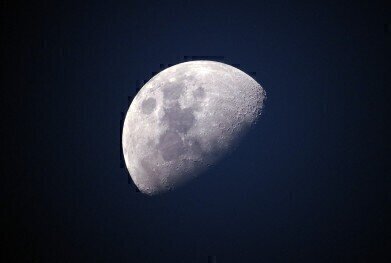Gas Detection
How Does the Moon Affect Methane Emissions?
Jan 11 2021
The gravitational pull exerted by the moon could affect methane emissions from our oceans, according to a new study on the Arctic Ocean. Published in the scientific journal Nature in October, the paper looks at how the ebb and flow of the tides affects methane deposits near the seafloor and speculates how these could impact upon the global methane budget should the gas reach the surface of the water.
As a very potent greenhouse gas, methane is believed to be one of the chief contributors towards global warming and climate change. Therefore, any research which can shed light on how it is being emitted from the Earth and what we can do to curb its impact is very welcome – but the paper’s authors say that further investigations are needed in order to fully determine how the moon affects methane emissions.
We need to talk about methane
Over a 20-year period, methane is believed to be 84 times more powerful as a greenhouse gas than carbon dioxide. Common sources of methane emissions include coal mining, animal husbandry and fossil fuel combustion, but it must be remembered that methane is present in all four of the alchemical elements in our environment – and the oceans comprise a significant part of that.
Complicated geological processes which take place under the waves can cause stress and fractures to the seabed, allowing methane to escape. Though these processes are not yet fully understood, the recent research uncovered a link between methane emissions and fluctuating sea levels, with study co-author Dr Andreia Plaza-Faverola commenting: “The moon causes tidal forces, the tides generate pressure changes and bottom currents that in turn shape the seafloor and impact submarine methane emissions. Fascinating!”
An underappreciated source
Dr Plaza-Faverola and the rest of the team conducted their study at the Vestnesa ridge, which is a known site of methane seepage located off the northerly Norwegian archipelago of Svalbard. By taking measurements of methane concentrations at two different points at both high and low tides, the researchers were able to determine how much sea level affected the emissions.
They found that even small changes in the pressure of the water column could have noticeable impacts upon the behaviour of the methane. For example, at low tide, there was reduced hydrostatic pressure, resulting in greater methane release. At high tide, the pressure increased, leading to a lower intensity of methane emissions.
Further investigations needed
The fact that methane found in shallower waters can reach the surface more quickly means that ironically, rising sea levels could reduce the amount of methane released by the oceans. However, any small gains made in that department would be offset by the fact that warmer ocean temperatures would increase emissions, so that the two phenomena effectively cancel one another out.
However, the authors of the study were quick to affirm that their findings represented only preliminary research into the subject and that greater methane monitoring is now a must, especially in shallower waters over a longer time period. Undertaking such investigations will enhance our fledgling knowledge of how ocean-stored methane can be released – and what will happen if and when that comes to pass.
Digital Edition
IET 34.2 March 2024
April 2024
Gas Detection - Biogas batch fermentation system for laboratory use with automatic gas analysis in real time Water/Wastewater - Upcycling sensors for sustainable nature management - Prist...
View all digital editions
Events
Apr 24 2024 Jakarta, Indonesia
Apr 24 2024 Sao Paulo, Brasil
Apr 30 2024 Melbourne, Australia
Apr 30 2024 Birmingham, UK
May 03 2024 Seoul, South Korea


















